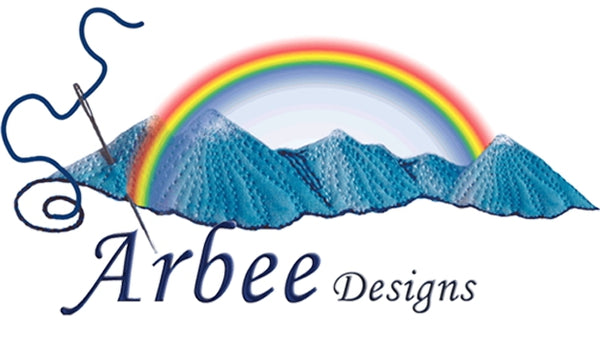Continuous Mitered Binding
There are two types of binding I use often in quilt making. Most commonly used is a continuous binding with mitered corner. This method can be done as a single (tutorial below) or double binding. The second method is one I use for most wall hangings. It is a straight binding and commonly used for single thickness. This particular method is just as easy as the first and is very similar to adding borders. You can find instructions for straight binding by following this link: Straight Binding
Which ever method you choose, you should cut strips for binding on the straight of grain. You only need to cut strips on the bias for curved bindings such as a circular quilt or a quilt with rounded corners.
Cut binding strips twice the width of your finished binding plus 3/4" for seam allowance and fold. Cut as many as required to equal the perimeter of the quilt, plus a little extra for joining. That is, measure around the outer edge of the quilt - 2 x width plus 2 x length. Add an extra 8-10" for joining. Example for a 30" x 40" quilt: The derimeter will equal 140" [(2 x 30) + (2 x 40)]. Since our fabric is generally 40" wide, we will cut 4 strips. 4 x 40 = 160". This will be sufficient to make the binding with some to spare.
When strips need to be joined, always join them on the bias. To do this, place the two strips right sides together perpendicular to each other to form a 90 degree angle. Stitch across the diagonal. Trim the seam allowance to 1/4" and press seam open.

Joining strips
Mitered Binding
The method below is for a single thickness binding. If you require a double thickness binding, the instructions are slightly different. You can find those here: continuous double binding.
For this method, all binding strips need to be joined in one continuous line. Joins should be made on the bias as instructed above.
Cut one end of your binding strip at a 45 degree angle and press under 1/4" seam allowance along this edge.
Lay your binding down on one long side of your quilt with raw edges even and right sides together. Do not start too close to any corner, but rather midway along the side.
Stitch the binding to the quilt with a quarter inch seam stopping 1/4" before the corner.
Pivot your quilt ready to stitch the second side, but reverse off the end instead. The quilt maybe removed from the machine at this point.

Trim end to a 45 degree angle and press under 1/4"
Reverse off end after pivoting
Fold the binding at 45 degrees so it is in line with the side of the quilt that will be sewn next.

Make a second fold in binding at the edge of the quilt leaving a small 1/4" pleat in binding, laying the binding down with raw edges even with the next side to be sewn. Place the quilt back under the machine foot and proceed to stitch down the second side of the quilt.

Leave small pleat and align with next side
Repeat this for all corners.
When all corners have been stitched, continue to stitch the last side of the quilt up until about 8" before the starting stitches.
Ensure the binding is even with raw edge of quilt and overlaps folded edge at beginning. Trim top binding at same angle as folded edge leaving approximately 1/2" overlap. Finish stitching binding in place.

Stitching finished
Press binding over seam allowance. Turn binding to wrong side of quilt folding miters in place. Turn under raw edge and slip stitch in place.
Author: Ruth Blanchet
© Copyright 2012- Arbee Designs. All Rights Reserved. This content is copyrighted by the respective teachers or authors of the article/lesson presented on this page. Unless otherwise indicated, all other content is the property of Arbee Designs. You may not make copies of the material for others without the written permission of Arbee Designs.
